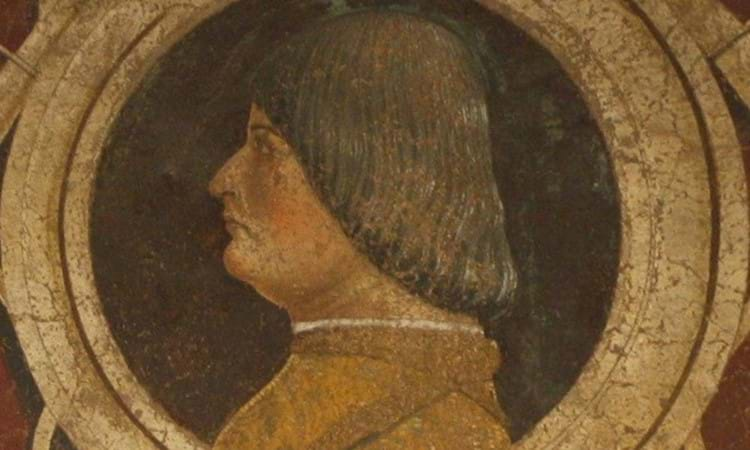Circle of Bonifacio Bembo (c.1420 – died 1482)
22/10/2022
Coming Soon to Hessink's
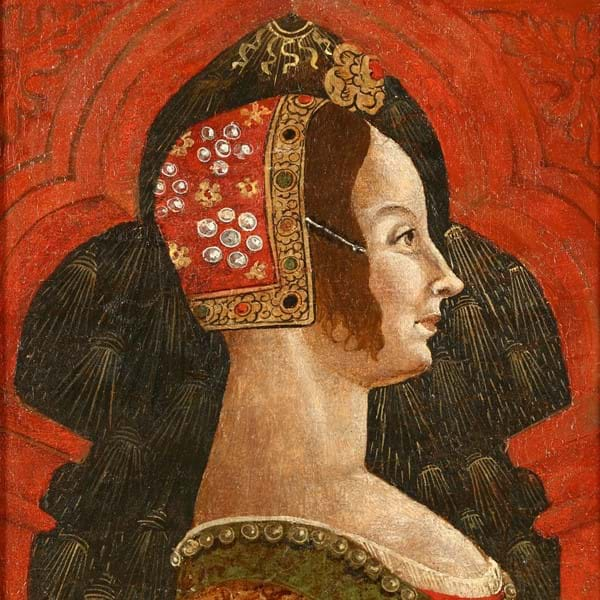
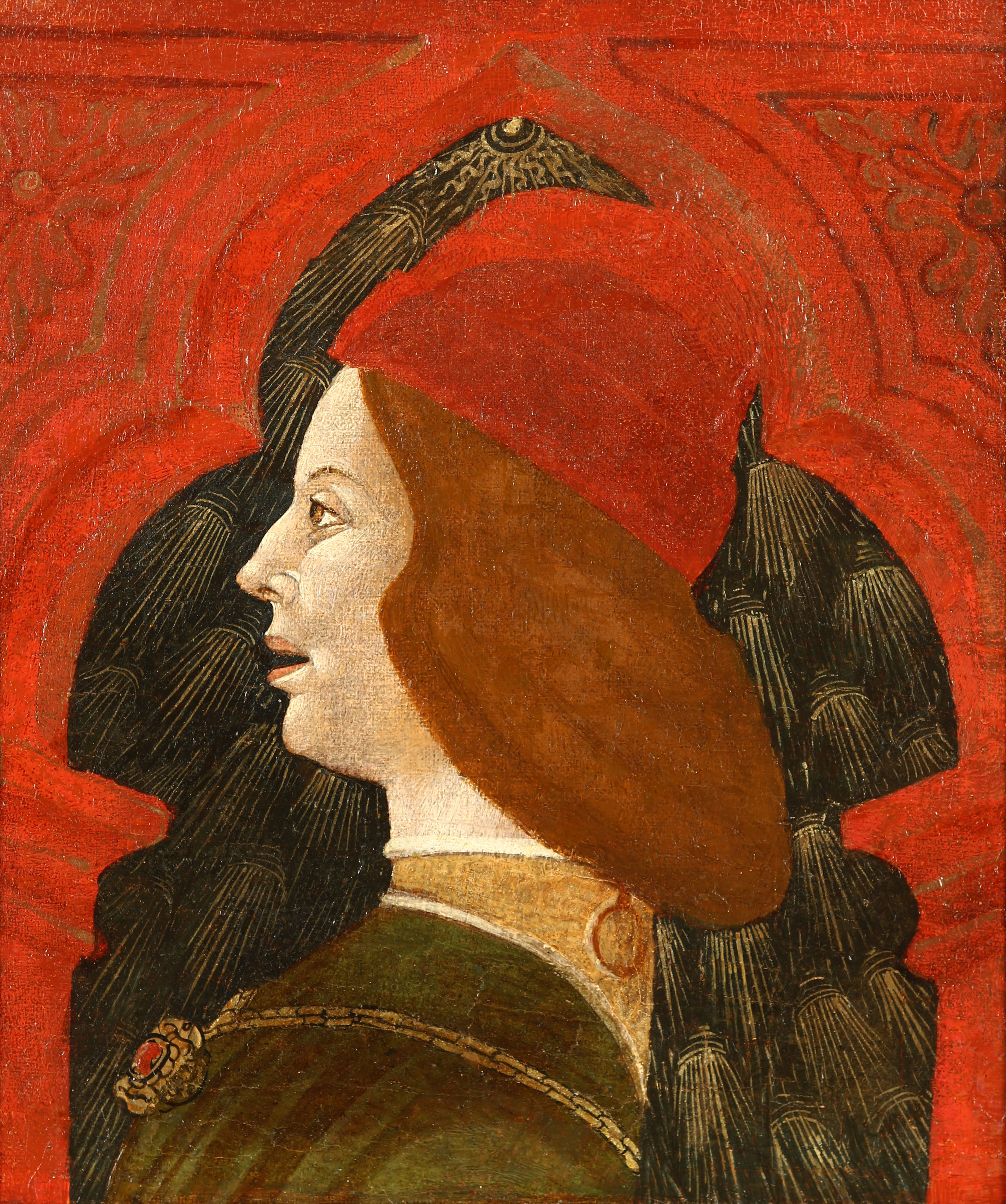
* Tempera on panel laid down on canvas
Circle of Bonifacio Bembo (c.1420 – died 1482)
Italian (Lombard School), c. 1460/70
‘Profile Bust of a Woman in an Arcade, Facing right’
‘Profile Bust of a Man in an Arcade, Facing Left’
Tempera on panel laid down on canvas
Size 35.5 x 29.5 cm.
Estimate: 10.000 / 15.000 euro
(Condition: Without faults or damaged)
PROVENANCE
– Collection Leo Nardus / Arnoldus van Buuren, Haarlem, confiscated in 1940 by the German National Socialist;
– Bankshaus Lippmann, Rosenthal & Co, Amsterdam; (Bank of the Nazis in WW-2)
– Auction SJ Mak van Waay, Amsterdam 29 June 1943, lot 18 (as Florentine School);
– Tromp van Horst, Amsterdam;
– 1951 Office for Restoration Payments and Property Restoration of the Dutch Ministry of Finance (Hergo);
– Collection Dutch Art Property (Inv.No.: NK 2894 & NK 2895);
– Loan to the Institute of Art History, Groningen (NL);
– 1987-2009 Permanent loan to the Bonnefantenmuseum, Maastricht (NL);
– 2009 returned to heirs of the Nardus family.
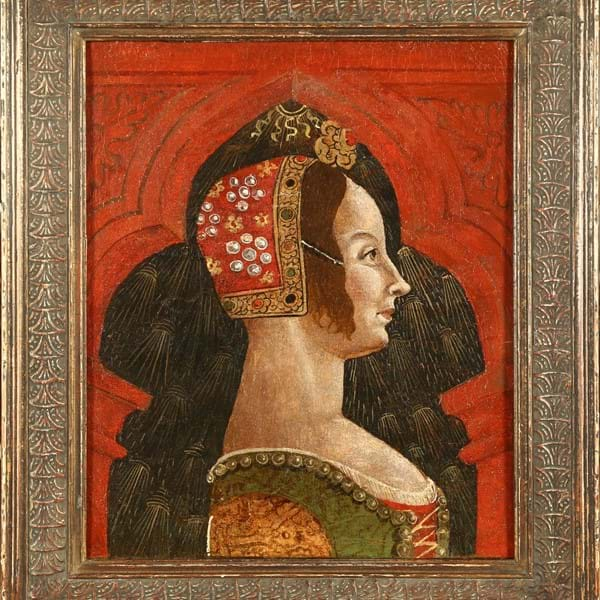
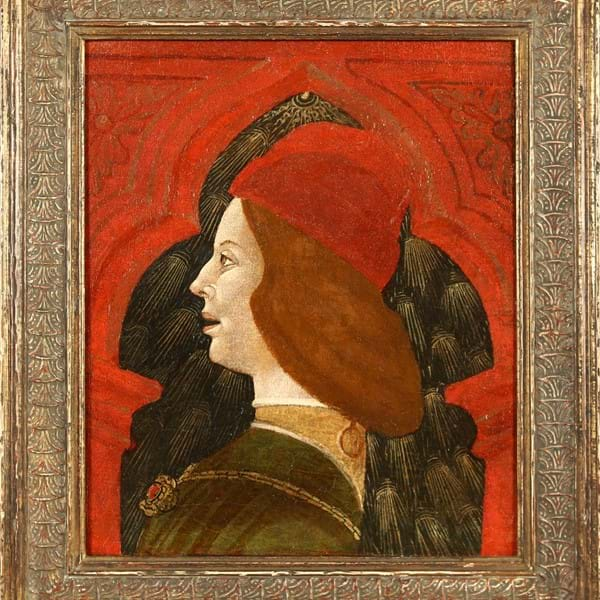
* Both portraits framed
LITERATURE
– Christopher Wright; ‘Paintings in Dutch museums ‘An Index of Oil Paintings in Public Collections in the Netherlands by Artists born before 1870, London, 1980, p. 197.
– Old Master Paintings: an illustrated summary catalogue – The Netherlands Office for Fine Arts at The Hague (= Rijksdienst Beeldende Kunst, RKD), Zwolle, 1992, No. 2971.
– L.J. de Jong-Janssen, Catalogue of the Italian Paintings in the Bonnefantenmuseum, (1995), p. 138, fig. 67 & 68.
NOTE
– In the course of the 20th century, existing portrait paintings at the end of the 15th century were largely cataloged as ‘Florentine school’. In 1922 Mikols Boskovits was able to identify these two profile portraits, now offered in our next sale, as Lombard origin of the late 15th century and as typical examples of this period. According to a verbal report by the previous owner's the attribution of these two profile portraits to the ‘Lombard school’ was also confirmed by Everett Fahy. These portraits were often produced for the frieze decoration that graced the lower edges of the ceilings in the great Lombard palaces of the 15th century, usually coupled with beautiful coat of arms. The small panels were attached to the upper edges of the walls, forming the exact transition from the wooden beams supporting the ceilings to the wall decorations below.
The floral decoration and pearl embellishments of these two profile paintings suggest that these portraits may have come from the same artist's studio as the Sforza paintings. Comparing the style and the manner in the way this female and male have been portrayed from the sides, as well as the architectural surrounds and the backgrounds of both paintings, we can see a strong resemblance to the works of Bonifacio Bembo (c. 1420-1480), now in the Museo provinciale di Torcello in Venice. Another painting similar to this female profile here offered, and also assigned to the workshop of Bonifacio Bembo, is now in the Walters Art Gallery, Baltimore (see: Zeri F., ‘Italian Paintings in the Walters Art Gallery’, Vol I, Baltimore 1976, pp. 293-295, No. 200-201, plate 141).
The same strong resemblance you also can find again in the more than 20 portraits in the collection of the Castello Sforzesco in Milan, also works of Bonifacio Bembo. The largest series of a total of 98 portraits has been preserved in the Museo Poldi Pezzoli in Milan. It was originally made for Ottaviano Vimercati Palace in Crema. With the support of the powerful Sforza family, Lombardy experienced a cultural heyday in the 15th and 16th centuries. Ludovico Sforza, also known as Lodovico “il Moro”, Duke of Milan was the famoust of this Sforza family. One of Ludovico's court artist and engineer was Leonardo da Vinci. He painted the most celebrated portrait of his mistress Cecilia Gallerani, better known as ‘The Lady with an Ermine’.
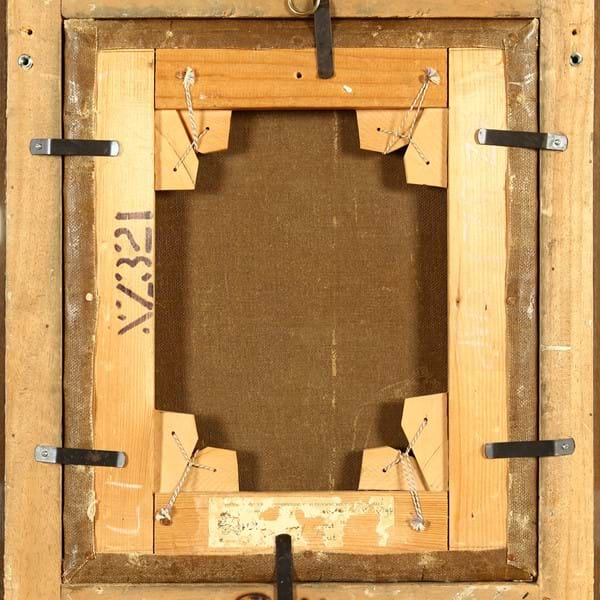
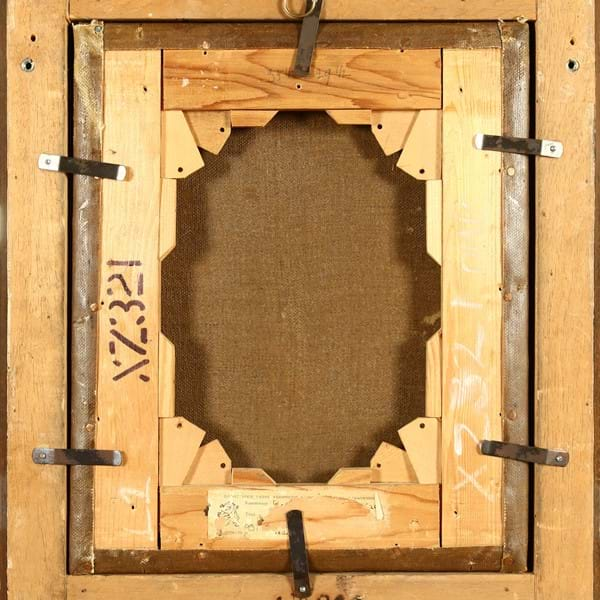
Reverse of both portraits (scaled panel on canvas) with remains of the label “Dienst voor 's Rijks Verspreide Kunstobjecten” (=Service for Nationally Distributed Art Objects) and Inv. No.: 2894 & NK 2895. (period 1949 – 1984)
